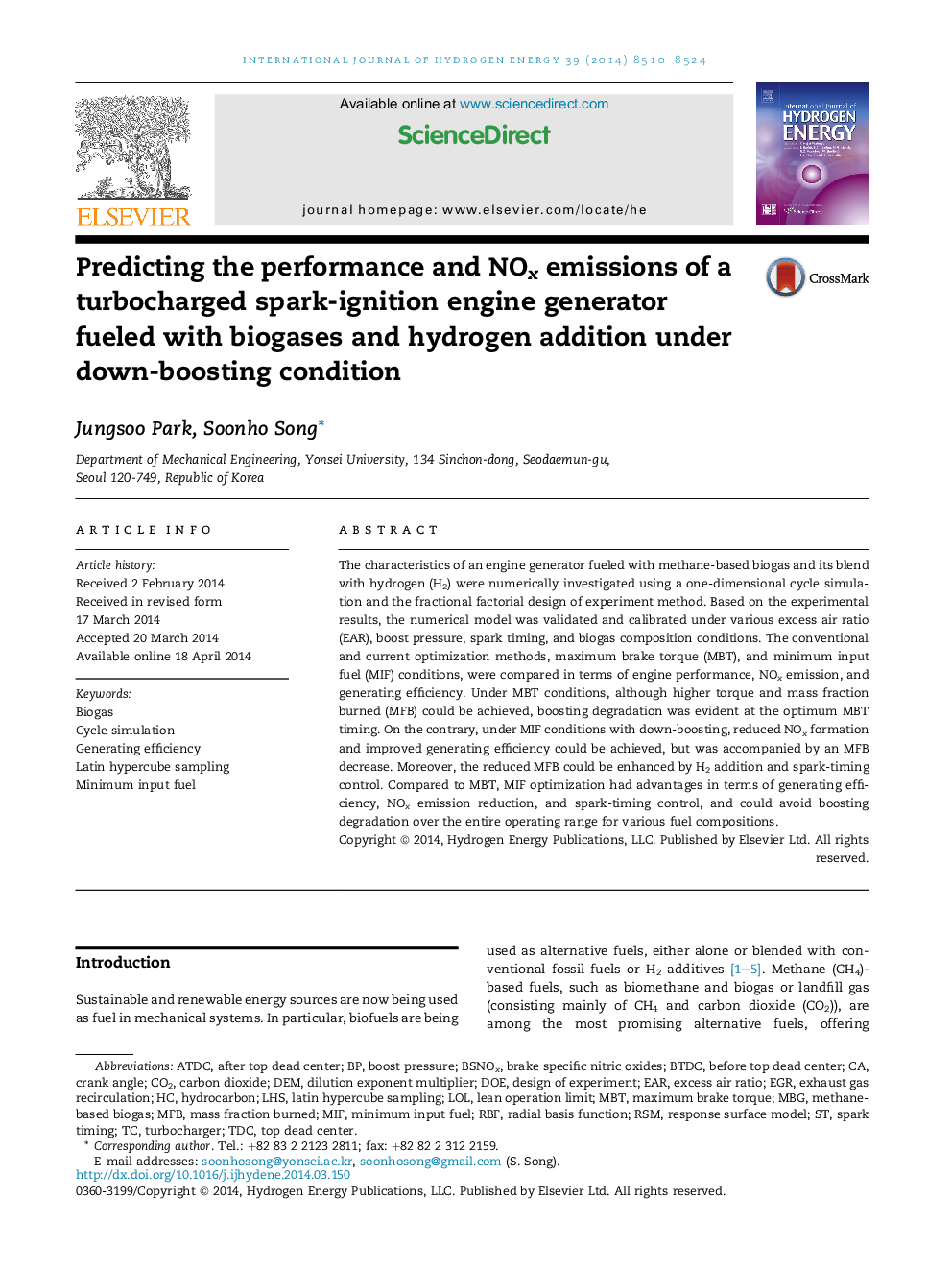| Article ID | Journal | Published Year | Pages | File Type |
|---|---|---|---|---|
| 7719362 | International Journal of Hydrogen Energy | 2014 | 15 Pages |
Abstract
The characteristics of an engine generator fueled with methane-based biogas and its blend with hydrogen (H2) were numerically investigated using a one-dimensional cycle simulation and the fractional factorial design of experiment method. Based on the experimental results, the numerical model was validated and calibrated under various excess air ratio (EAR), boost pressure, spark timing, and biogas composition conditions. The conventional and current optimization methods, maximum brake torque (MBT), and minimum input fuel (MIF) conditions, were compared in terms of engine performance, NOx emission, and generating efficiency. Under MBT conditions, although higher torque and mass fraction burned (MFB) could be achieved, boosting degradation was evident at the optimum MBT timing. On the contrary, under MIF conditions with down-boosting, reduced NOx formation and improved generating efficiency could be achieved, but was accompanied by an MFB decrease. Moreover, the reduced MFB could be enhanced by H2 addition and spark-timing control. Compared to MBT, MIF optimization had advantages in terms of generating efficiency, NOx emission reduction, and spark-timing control, and could avoid boosting degradation over the entire operating range for various fuel compositions.
Keywords
DOEBSNOxGenerating efficiencyLean operation limitDemMBGMFBLHSRBFTDCMBTaTDCEGRbTDCBoost pressureafter top dead centerBiogasTurbochargerMaximum Brake TorqueCarbon dioxideRSMCrank AngleSpark timingCycle simulationMIFdesign of experimentRadial basis functionbefore top dead centerLOLResponse surface modeltop dead centerExcess air ratioLatin hypercube samplinghydrocarbonCO2Mass fraction burnedexhaust gas recirculationEAR
Related Topics
Physical Sciences and Engineering
Chemistry
Electrochemistry
Authors
Jungsoo Park, Soonho Song,
